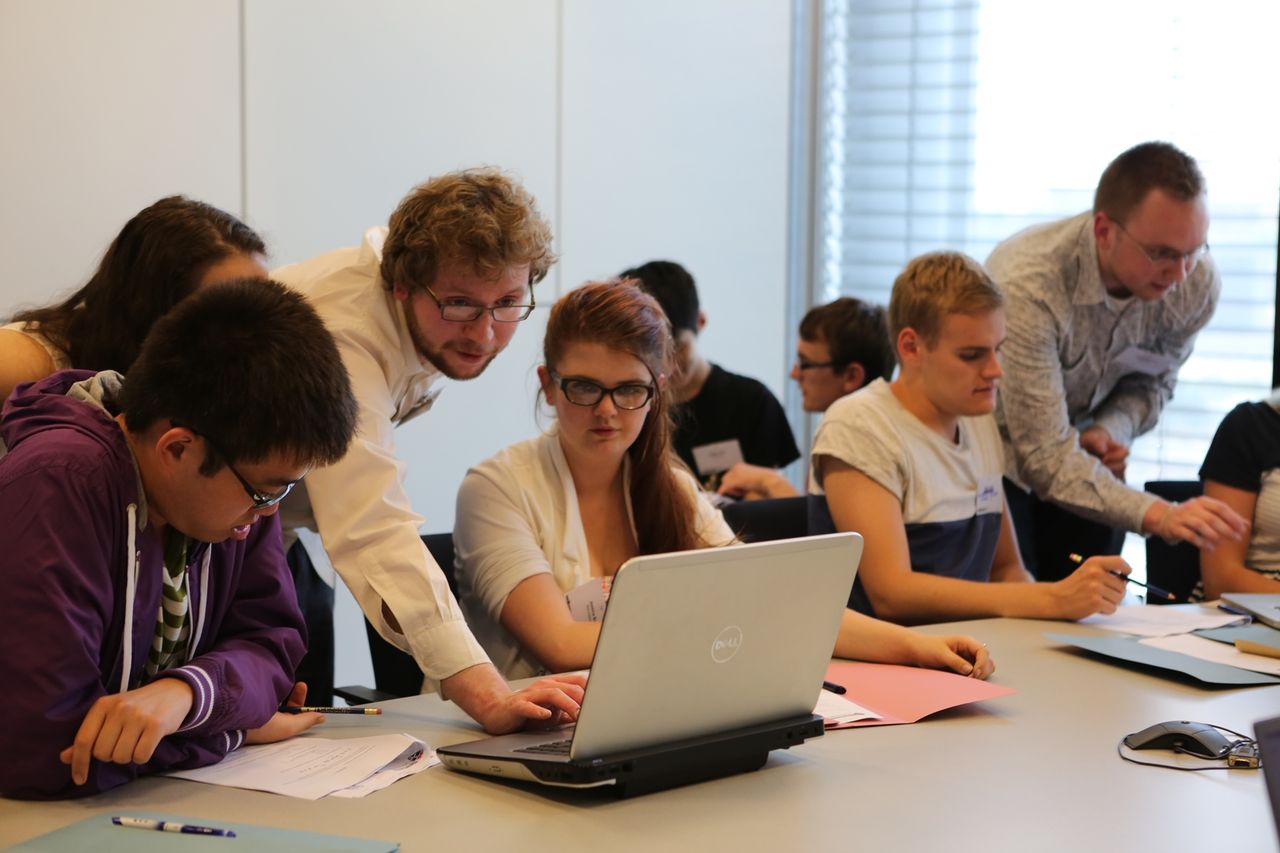Team:Newcastle/Outreach/Workshop
From 2013.igem.org
YDemyanenko (Talk | contribs) |
|||
| Line 16: | Line 16: | ||
NB. Information about modelling the Subtilin system is included in our lecture slides on our wiki for the extra keen but was not covered in our talk. | NB. Information about modelling the Subtilin system is included in our lecture slides on our wiki for the extra keen but was not covered in our talk. | ||
| - | We then ran a practice session in which we helped people get to grips with the BioNetGen language and the software required to produce models ([https://2013.igem.org/Team:Newcastle/Modelling/RuleBender RuleBender]). We provided a hand-out guiding people in how to build a Michaelis-Menten model and a simplified Lac operon model. | + | We then ran a practice session in which we helped people get to grips with the BioNetGen language and the software required to produce models ([https://2013.igem.org/Team:Newcastle/Modelling/RuleBender RuleBender]). We provided a hand-out guiding people in how to build a Michaelis-Menten model and a simplified Lac operon model. This presentaion also introduced [https://2013.igem.org/Team:Leeds/Modeling Team:Leeds] to BioNetGen which they then used in their project. |
| - | + | ||
[[File:Workshop2.jpg|600px]] | [[File:Workshop2.jpg|600px]] | ||
Revision as of 13:01, 15 August 2013

Contents |
Modelling Workshop at the U.K. meet up
Overview
On Friday the 12th of July our team was at UCL for the iGEM U.K. meet up. We delivered a workshop about Mathematical modelling and using the rule-based modelling language BioNetGen. We beleive the workshop presentation and handouts we developed are a great resource for those new to biological modelling.
We first gave a presentation covering the following areas:
- What is modelling?
- The benefits of rule-based modelling.
- The difference between deterministic and stochastic modelling.
- How to build a Michaelis-Menten model with BioNetGen.
NB. Information about modelling the Subtilin system is included in our lecture slides on our wiki for the extra keen but was not covered in our talk.
We then ran a practice session in which we helped people get to grips with the BioNetGen language and the software required to produce models (RuleBender). We provided a hand-out guiding people in how to build a Michaelis-Menten model and a simplified Lac operon model. This presentaion also introduced Team:Leeds to BioNetGen which they then used in their project.

Presentation
These are the slides from our modelling presentation:
A downloadable version can be found here.
Handouts
This is the handout from our modelling workshop:
A downloadable version can be found here.
Feedback
This is the feedback form from our modelling workshop:
A downloadable version can be found here.
After we presented our workshop, attendees filled in their feedback forms scoring different aspects of the workshop between 1 (strongly disagree) and 5 (strongly agree). The mean results from these forms are listed below:
| The workshop talk was: | |
|---|---|
| Relevant | 4.6 |
| Easy to understand | 4.3 |
| Well-paced | 4.3 |
| The BioNetGen practice was: | |
|---|---|
| Useful | 4.1 |
| Complemented the talk | 4.4 |
| The workshop overall: | |
|---|---|
| Was well structured | 4.2 |
| Will help you build your own models | 3.9 |
| Interesting | 4.6 |
| Workshop handouts: | |
|---|---|
| Supported presentation material | 4.1 |
| Aided you in building a model | 4.0 |
| Were clear and well-organized | 4.1 |
| The presenters were: | |
|---|---|
| Knowledgeable | 4.3 |
| Well-prepared | 4.5 |
| Responsive to participants’ questions | 4.6 |
The feedback we received suggests that people found our workshop interesting and well structured. The part of feedback we scored lowest on was for helping people build their own model, possibly because they are using different software to build models. We also think we could improve the clarity of our handouts to guide people through our prepared exercises more effectively. We enjoyed delivering this workshop and feel the feedback shows our workshop was a success. We beleive the workshop presentation and handouts we developed are a great resource for those new to biological modelling.
Gallery








.JPG)






























 "
"